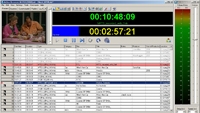PlayBox CTO demystifies mixed format playout

In dynamic content environments, such as contemporary TV channels, there are a variety of content sources and authoring platforms used to prepare the content. In an ideal world, a single playout channel that supports multiple types of video and audio compression systems provides a number of major advantages.
This “mixed playout server” can provide straightforward and efficient operation with many economies over the alternative solutions. There are timesavings because playout can be immediate with no need to convert the content prior to playout, and because there is no need to duplicate the content in various file and compression formats, it effectively enables storage space savings. There are also equipment savings achieved by not having to buy slow, costly conversion equipment or software. At the same time, the playout will retain the highest possible technical quality because the original content quality remains intact by eliminating recompression stages. Last but not least, there are savings in running costs because there is no need for dedicated quality assurance personnel to verify image and sound quality after each conversion.
There are many mixed playout servers available on the market already, however, not all are born equal. As with many modern phrases, mixed playout is one that is considered by some as marketing talk. With some manufacturers making optimistic promises of performance, it is easy to understand clients’ skepticism and confusion. So, let's try to shed some light on what manufacturers mean by mixed playout.
Pseudo-mixed playout
This is the ability to handle and playback clips with the same compression type but in different file containers. A fairly simple example is DV video. It can happily exist in a variety of containers — video for windows (AVI), QuickTime (MOV), raw DV, MXF, etc. All of these containers have a variety of subcontainers to store elementary audio and video, or a multiplexed A/V stream. Some server manufacturers used to be locked into a very specific container type or subtype, usually the one they can ingest themselves. Now, such manufacturers claim they have mixed playout by just unlocking the playout engine to support more containers but, essentially, the same compression. This is not the true meaning of mixed playout.
Basic mixed playout
This involves the handling and playback of MPEG-2 and DV clips in the same rundown. Those two compression formats have been around for a while and are now dominant for satellite distribution (MPEG-2) and newsgathering/editing (DV); therefore, such mixed playout servers are a good fit for many cases. Some go even further, announcing AVC/H.264 support, because this is quickly becoming the next major distribution platform. However, it should be noted that some manufacturers are still locked into specific file containers, e.g. they may only support DV AVI and MXF MPEG-2 but not vice versa or other containers.
True mixed playout
Handling the most popular compression types such as DV, MPEG-1, MPEG-2 and MPEG-4, including AVC/H.264 and WMV/VC-1, is true mixed playout. But the broader the supported range, the greater the chances of weak support for a particular format, because the variety of compression subformats and file containers becomes huge and practically impossible to test. Again, some manufacturers stick to some preapproved container types, others do not.
The dream mixed playout
This provides support for any playable file that has its codec installed. Some manufacturers claim their products do it, but beware, it is dangerous for your airtime sales to believe that reliable playout of any kind of video exists. This is simply because universal solutions always fail to deal properly with proprietary formats — various MXF implementations are a perfect example.
Besides container types and compression formats, there are other variables that are involved with the format of the baseband video and audio themselves that should be checked out. The dream mixed playout servers may be expected to handle all these within the same playlist. There are various video resolutions, for example 1080- and 720-line HD formats, CIF, 576- and 480-line SD, mobile TV and custom formats. Frame rates can be 25Hz, 29.97Hz, 15Hz, 12Hz or custom. Audio frequencies can be 22.05KHz, 32KHz, 44.1KHz, 48KHz and more. In addition, there are different audio sampling sizes that need to be supported, such as 8-bit, 16-bit, 24-bit, etc.
The new AirBox Mixed Playout engine has been designed with the above in mind. In its final version, the AirBox will be able to simultaneously run a wide range of content formats.
The mixed playout presentation can include a number of transitions and presentation formats such as clip transitions, frame-accurate trimming, slideshows made of still pictures and MP3 audio, various frame rates (25Hz, 29.97Hz, etc.), resolutions and audio frequencies.
For more information, visit www.playbox.tv.
Get the TV Tech Newsletter
The professional video industry's #1 source for news, trends and product and tech information. Sign up below.
